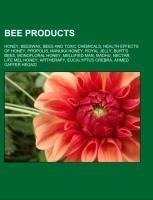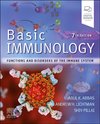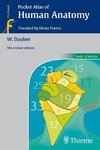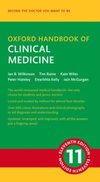
-
 Anglický jazyk
Anglický jazyk
Bee products
Autor: Source: Wikipedia
Source: Wikipedia. Pages: 31. Chapters: Honey, Beeswax, Bees and toxic chemicals, Health effects of honey, Propolis, Manuka honey, Royal jelly, Burt's Bees, Monofloral honey, Mellified man, Madhu, Nectar, Life Mel Honey, Apitherapy, Eucalyptus crebra, Ahmed... Viac o knihe
Na objednávku, dodanie 2-4 týždne
13.68 €
bežná cena: 15.20 €
O knihe
Source: Wikipedia. Pages: 31. Chapters: Honey, Beeswax, Bees and toxic chemicals, Health effects of honey, Propolis, Manuka honey, Royal jelly, Burt's Bees, Monofloral honey, Mellified man, Madhu, Nectar, Life Mel Honey, Apitherapy, Eucalyptus crebra, Ahmed Gaffer Hegazi, Honey production in Hungary, Comb honey, Regional honeys, Pinocembrin, Bee bread, Pinobanksin, Honey Drop, Slumgum, Whipped honey, Melissopalynology, Pine honey, National Honey Show, Miel luxembourgeois de marque nationale, Medihoney, Abbamele, Leptospermum honey. Excerpt: Honey (English pronunciation: ) is a sweet food made by bees using nectar from flowers. The variety produced by honey bees (the genus Apis) is the one most commonly referred to and is the type of honey collected by beekeepers and consumed by humans. Honey produced by other bees and insects has distinctly different properties. Honey bees form nectar into honey by a process of regurgitation, and store it as a primary food source in wax honeycombs inside the beehive. Beekeeping practices encourage overproduction of honey so the excess can be taken from the colony. Honey gets its sweetness from the monosaccharides fructose and glucose, and has approximately the same relative sweetness as that of granulated sugar. It has attractive chemical properties for baking, and a distinctive flavor that leads some people to prefer it over sugar and other sweeteners. Most microorganisms do not grow in honey because of its low water activity of 0.6. However, honey sometimes contains dormant endospores of the bacterium Clostridium botulinum, which can be dangerous to infants, as the endospores can transform into toxin-producing bacteria in the infant's immature intestinal tract, leading to illness and even death (see Health hazards below). Honey has a long history of human consumption, and is used in various foods and beverages as a sweetener and flavoring. It also has a role in religion and symbolism. Flavors of honey vary based on the nectar source, and various types and grades of honey are available. It is also used in various medicinal traditions to treat ailments. The study of pollens and spores in raw honey (melissopalynology) can determine floral sources of honey. Because bees carry an electrostatic charge, and can attract other particles, the same techniques of melissopalynology can be used in area environmental studies of radioactive particles, dust or particulate pollution. Honey is produced by bees as a food source. In cold weather or when fresh food sources are scarce, bee
- Vydavateľstvo: Books LLC, Reference Series
- Rok vydania: 2022
- Formát: Paperback
- Rozmer: 246 x 189 mm
- Jazyk: Anglický jazyk
- ISBN: 9781156942574












